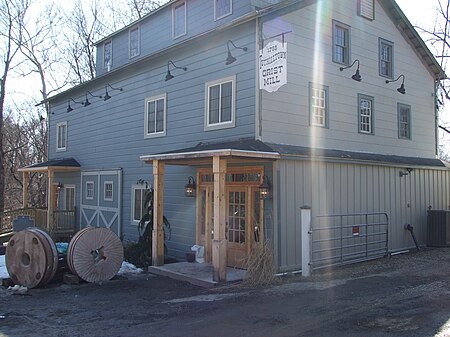Tuthilltown Gristmill
1788 establishments in New York (state)Buildings and structures in Ulster County, New YorkGardiner, New YorkGrinding mills in New York (state)Grinding mills on the National Register of Historic Places in New York (state) ... and 3 more
Industrial buildings completed in 1788National Register of Historic Places in Ulster County, New YorkWatermills in the United States

The Tuthilltown Gristmill is located off Albany Post Road (Ulster County Route 9) in Gardiner, New York, United States. It was built in 1788, as the National Register reports, and has been expanded several times since. Until recently it was the oldest continuously operated grist mill in the state. It was added to the National Register of Historic Places in 1982. Around that time it began producing kosher flour for use in baking matzoh. In 2007, its present owners began converting it into a restaurant TuthillHouse at the Mill opening in August, 2010.
Excerpt from the Wikipedia article Tuthilltown Gristmill (License: CC BY-SA 3.0, Authors, Images).Tuthilltown Gristmill
Grist Mill Lane,
Geographical coordinates (GPS) Address Nearby Places Show on map
Geographical coordinates (GPS)
| Latitude | Longitude |
|---|---|
| N 41.685833333333 ° | E -74.176388888889 ° |
Address
Grist Mill Lane
12525
New York, United States
Open on Google Maps







